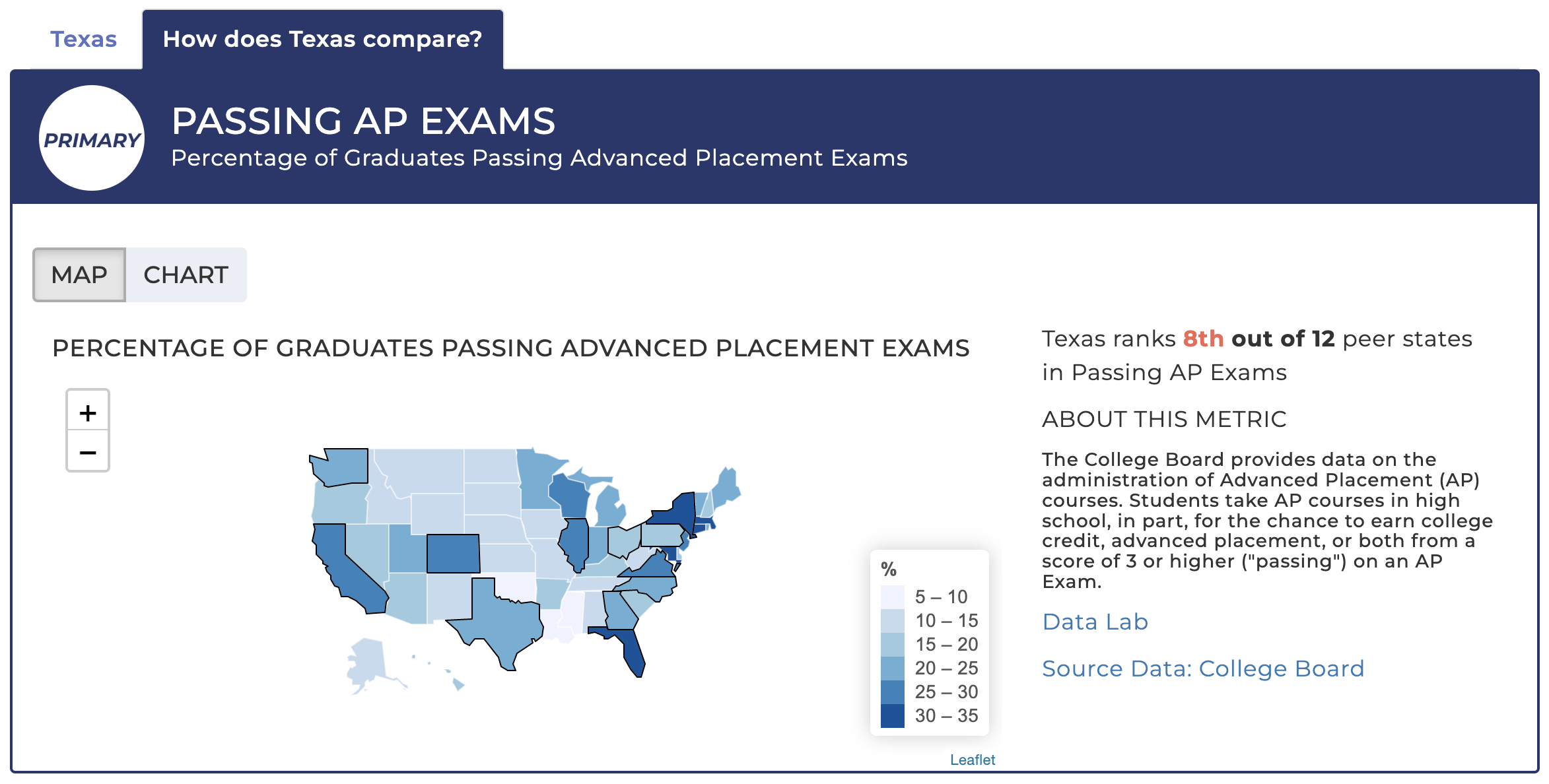Strategic Framework Guide: How does TX stack up against peer states?
The peer states report is part of our guide series to “Shaping Our Future: A Strategic Framework for Texas.” The Strategic Framework provides in-depth, cross-cutting data to inform key decisions about the most significant issues facing the state.
Texas is an economic powerhouse, attracting businesses and people from across the country and around the world to our state. Our state has led the nation in job creation for much of the last two decades.
At Texas 2036, we are committed to highlighting the priorities that will help maintain our economic strength as we continue to grow.
What is the Strategic Framework?
To put a spotlight on issues that will shape Texas’ future and to build constituencies that see the need to address them, Texas 2036 released a new online Strategic Framework dashboard that takes a comprehensive look at forces shaping Texas’ future.
This framework is based on the vast amounts of data we have compiled to show where Texas is today and where we may be headed if we don’t take action to shape our future.
Why compare Texas to other peer states?
We realized that it was important to rank Texas against performance indicators, but also to see how Texas is doing against similar states.
- Why? Across these metrics, we believe hold the keys to continued success in the future.
This allows Texas policymakers and the public to make some of the same comparisons that people and businesses around the world make when looking where to invest or live.
Which states are peers of Texas?
Texas and California are often compared, but we have many other competitors for business and talent that are of similar size to Texas. So we asked three big questions in determining the 11 that we would call “peer states”:
- Which states are our primary competitors for business?
- Which states are our primary competitors for talent?
- Which states are similar in size to Texas?
This led to Texas 2036 assembling a list of 11 large, similar states: California, Colorado, Florida, Georgia, Illinois, New York, North Carolina, Ohio, Pennsylvania, Virginia and Washington.

These peer states were selected by looking at business metrics such as overall economic growth; the number of businesses, including Fortune 500 headquarters; Inc. Magazine’s 5,000 fastest-growing companies; new small businesses and venture capital investments; and, rankings on national indices assessing how attractive states are to businesses.
To determine which states were the most successful at attracting or retaining talent two years ago, we identified factors such as overall increase in the talent pool, including net migration gain; rankings on a national index assessing quality of life measuring factors such as cost of living, education, health, crime, commute times, weather and cultural and recreational opportunities; and, measures of per capita personal income.
Similar states to Texas’ size:
- Both the size of the economy.
- The size of the population.
- The number of major metropolitan areas.
One out of every two Americans lives in a peer state
Texas and these 11 peer states account for 57% of the total U.S. population and 61% of the nation’s GDP.
In other words, these peer states’ success in preparing our people, maintaining our infrastructure, managing our natural resources, and ensuring health, justice and safety will go a long way in measuring how well our country does in the coming years.
Throughout the Strategic Framework dashboard, where the data is available, we have included benchmarks that indicate where Texas currently ranks among all states and these peers.
How does Texas compare?
We encourage every Texan to take the opportunity to look through our Strategic Framework dashboard to see for themselves how Texas compares against other states.

The point is not to win a certain number of categories against other states or climb to a specific spot in the rankings. Rather, it is to acknowledge that, without the right investments and priorities, Texas could find itself trailing other large states
Texas 2036 commits to building support for the solutions and investments that will keep us competitive well into the future. As we head into the 88th Legislative Session, with an unprecedented, once-in-a-lifetime budget surplus, our state has a tremendous opportunity to build on its legacy of success and invest in the future.
Shaping our country’s future: An opportunity for Texas and peer states to lead
There is a significant opportunity for Texas and its peer states to partner on collecting and disseminating data. Both the Lone Star State and peer states can convene for discussions about common challenges and innovative policies and practices.
These actions will allow all states and the nation to move forward on these important goals.
